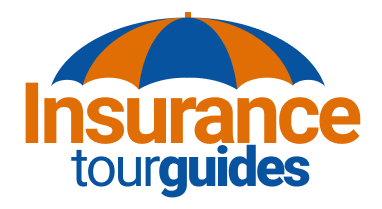Auto insurance is more than just a legal requirement—it’s a financial safety net that protects you from unexpected costs after an accident. With so many policy options, coverage levels, and premium factors to consider, choosing the right plan can feel overwhelming. Learn how to navigate the world of auto insurance so you can find the best coverage at the best price.
Understanding Auto Insurance Basics
Auto insurance is designed to cover damages and liabilities in case of an accident, theft, or other vehicle-related incidents. Policies typically include multiple coverage types, and understanding each one can help you determine what you really need.
Liability Coverage
This is the minimum coverage required in most states. It includes:
- Bodily injury liability – Covers medical expenses and lost wages for others if you’re at fault.
- Property damage liability – Pays for damage to another person’s vehicle or property.
Collision Coverage
This covers repairs or replacement of your car if you’re in an accident, regardless of fault. If your car is financed or leased, your lender may require this coverage.
Comprehensive Coverage
Protects against non-accident-related damages, such as theft, vandalism, fire, or natural disasters. It’s an important add-on, especially if you live in an area prone to extreme weather or high theft rates.
Uninsured/Underinsured Motorist Coverage
If you’re hit by a driver who has no insurance or insufficient coverage, this policy helps pay for medical bills and vehicle damage. Some states require this coverage, while others make it optional.
Medical Payments (MedPay) or Personal Injury Protection (PIP)
Covers medical expenses for you and your passengers, regardless of who was at fault. PIP also covers lost wages and other related costs. Some states, especially no-fault states, require PIP coverage.
How to Determine the Right Coverage for You
Know Your State’s Minimum Requirements
Each state sets its own minimum liability insurance requirements. While meeting these requirements keeps you legal, minimum coverage may not be enough to fully protect you in an accident.
Consider Your Vehicle’s Value
If you have a new or high-value car, comprehensive and collision coverage can protect your investment. If you drive an older car with a low market value, liability coverage alone may be sufficient to save money on premiums.
Assess Your Financial Situation
Higher coverage limits and lower deductibles mean better protection but come at a higher cost. If you have savings to cover unexpected repairs, choosing a higher deductible can lower your monthly premium.
Tips to Save Money on Auto Insurance
Shop Around and Compare Quotes
Insurance rates vary between providers, so getting multiple quotes ensures you find the best price. Many insurers offer online tools to compare coverage options easily.
Bundle Your Insurance Policies
Many insurers offer discounts when you bundle auto insurance with home, renters, or life insurance policies.
Maintain a Clean Driving Record
Accidents, speeding tickets, and other violations can raise your rates. Safe driving habits help keep your premiums low.
Consider Usage-Based Insurance
Some companies offer pay-per-mile or telematics-based policies that adjust rates based on driving habits. If you drive infrequently or safely, you may qualify for significant savings.
Look for Discounts
Most insurance companies offer discounts for:
- Safe driving
- Good student grades
- Anti-theft devices
- Defensive driving courses
Adjust Your Deductible
A higher deductible means lower monthly premiums, but be sure you can afford the out-of-pocket cost if you file a claim.
Finding the Best Auto Insurance for Your Needs
The best policy is one that balances affordability with the right level of coverage. Consider your personal driving habits, financial situation, and vehicle type when choosing a plan. Always read the fine print to understand what is and isn’t covered.
Auto insurance isn’t just about meeting legal requirements—it’s about protecting yourself, your passengers, and your finances. By knowing your coverage options, shopping around, and taking advantage of discounts, you can secure the best policy at the best price.

